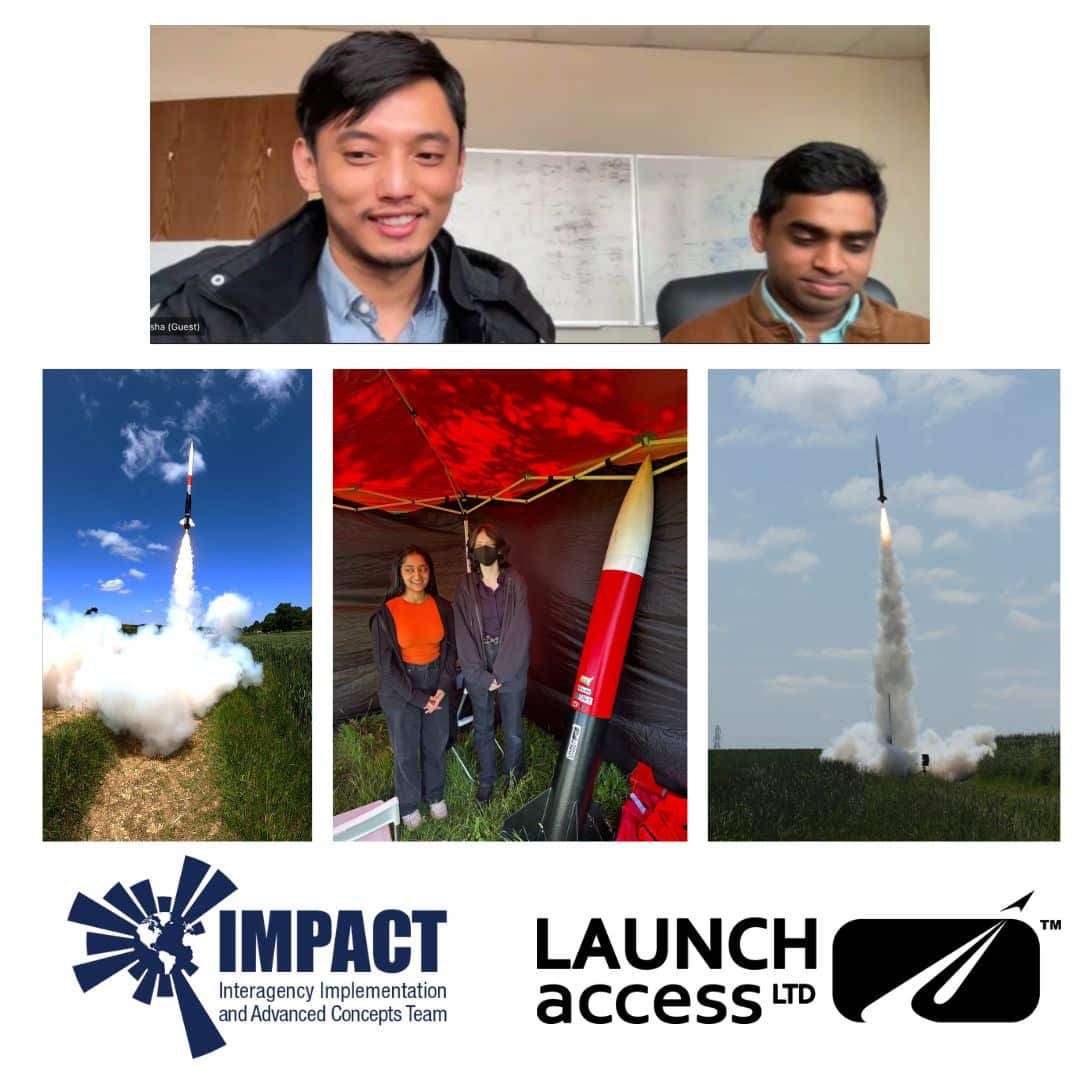Over the weekend, Sutton High Girls participating in the GDST Space Technology Programme took part in Stage Two of their Royal Society Partnership Grant project, a research rocketry launch of their computer-automated environmental sensor payload in Elsworth, Cambridgeshire. Guided by STEM partner Ben Jarvis of Launch Access Ltd., the students engaged in hands-on activity and experiential learning around the topics of flight optimisation to maximise on apogee (the rocket’s highest reached altitude) as well as the supporting aspects of research rocket rail buttons and rail towers and also ensuring tail fins are left unbent, so not to affect trajectory path.
Following Stage One preparations of an automated air quality sensor and imager (airborne camera filming a downward mirror reflection) for their payload at the Cambridge University School of Engineering last month, the students were delighted to see their onboard instruments reach an altitude of 2167ft, at 274 mph. The students left the launch site eager to explore their locally-collected data with a comprehensive program analysis, ahead of what they hope will become the next Stage Three of their project, to visualise and process the payload’s logged data readings via professional cloud-based machine learning tools. This would be in an attempt to manipulate the data, so to match it with satellite readings from the same area for up to two decades earlier.
Ahead of our GDST Space Technology student conference to be held at AWS London Headquarters this week, our department connected with NASA IMPACT, an initiative that specialises in prototyping latest technologies to support new science and applications from Earth Observation data. The Royal Society Partnership Project has brought with it the rare opportunity for our students to collect local airborne imagery and sensor data in locations that may also be searched by the My NASA Data (MND) Earth System Data Explorer tool, an upskilling asset of NASA GLOBE Mission Earth.
As a natural progression from the student-friendly MND platform, NASA Earth Science Data Systems’ vast number of leveraging tools allow students ready-access to satellite data, for use toward investigation of Earth Systems. These are natural systems found around the Earth, its atmosphere and its environments.
Upon learning how to use the more advanced NASA ESDS tools, a new avenue for computer science students with the right motivation and skillsets, could be to design and develop software tools to correlate local data readings with comparable satellite data, using innovative new approaches.
Iksha Gurung and Muthukumaran Ramasubramanian, working in the area of machine learning with Dr Manil Maskey at NASA IMPACT, will be participating on the GDST Space Technology Conference evaluation panel this week and have developed a variety of such tools. One example of this is ‘Similarity Search’, a facility able to rapidly compile image collections of everything from dust storms to coral reefs. It allows users to expedite discovery of relevant satellite images within an archive, by using a single sample image for comparison.
NASA IMPACT, being on the leading edge for datasets and data systems, implement their tools from cloud-native applications, that are novel in their ability to scour enormous Earth science datasets. This has proven a very relevant area of interest for our students on the GDST Space Technology Programme this term, following introductory use of their newly-constructed AWS student cloud facility. Read more about NASA IMPACT’s initiative here: https://impact.earthdata.nasa.gov/
As seen above: Sophie and Kiyara (Year 12 Sutton High) and also Iksha Gurung and Muthukumaran Ramasubramanian of NASA IMPACT!

